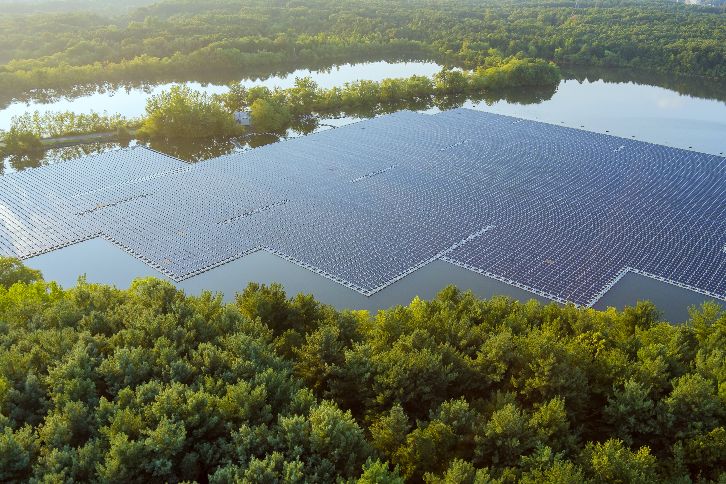Courtesy : www.iberdrola.com
Floating solar energy
solar photovoltaic energy is one of the most important and well-established renewable energy sources. For the past few years, floating solar PV has been gaining ground, which, according to the World Bank, could double installed capacity. At the moment, it has gone from 61 MW in 2015 to more than 3 GW in 2021, with 688 MW added in 2020 alone.

Floating photovoltaics uses the surface of important bodies of water to install floating photovoltaic panels.
Solar photovoltaic energy needs almost no introduction. It basically uses solar radiation to produce electricity. To do this, it requires three elements: photovoltaic modules, which convert photons of light into electrical energy; inverters, which convert direct current into alternating current and thus into electricity for consumption; and transformers, which raise the voltage to reduce electrical losses. In detail, the photovoltaic inverter has the function of converting the direct current, which is produced by the solar panels, into alternating current, which we can use. This transformation is achieved by means of power electronics devices (transistors, thyristors, coils, capacitors, etc.) that manage to transform a linear current into a sinusoidal current in the same way that we use in our homes and businesses.
Historically, photovoltaic installations, whether grid-connected generation plants or for self-consumption, have been located in places where the weather was conducive to a good number of hours of sunshine per year and always on the ground or on rooftops. However, in this way, other very important resources were being discarded: marshes and reservoirs and, lastly, the sea. Thus, floating photovoltaics was born, which uses the surface of these important bodies of water to install floating photovoltaic panels.
According to the World Bank, floating solar power could double the existing installed capacity of solar power because there are more than 400,000 square kilometres of artificial water reservoirs, i.e., swamps, reservoirs and the like in the world.
This variant of solar PV is gaining momentum in Asia, especially in China (a total of 1.3 GWp) and with more than 85% deployed in East and Southeast Asia. One example is Singapore, which inaugurated a 60 MWp plant in June 2021 and has requested a study for another 140 MW. As far as Europe is concerned, the Netherlands already has several floating photovoltaic plants while, in the case of Spain, this initiative is particularly interesting because it is the European Union country with the most infrastructures of this type, be they reservoirs, dams or dams, specifically 1,225, according to the Inventory of Companies and Reservoirs of the Ministry of Agriculture, Fisheries and Food.





